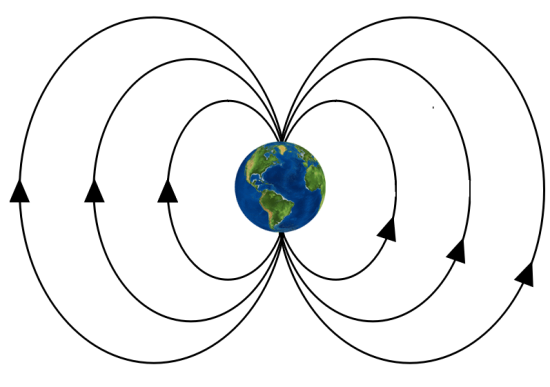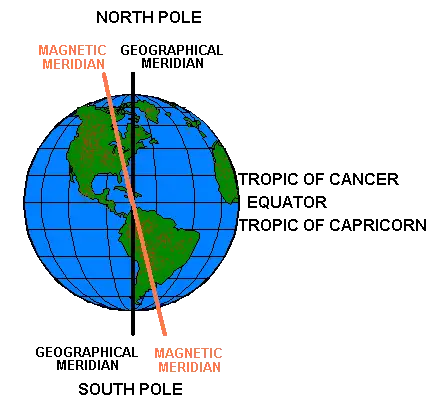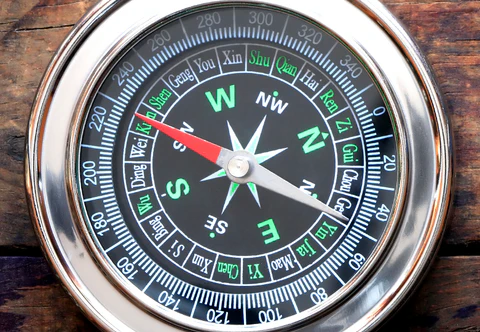First, let’s talk about the poles we’re most familiar with: the Geographic North and South Poles. These are the points on the Earth’s axis of rotation. This North Pole is located in the Arctic Ocean, while the South Pole is on the continent of Antarctica. These poles mark the top and bottom of our planet and these are the points where all the longitudinal lines meet.
Geographic Poles:

Now, the Earth also has another set of poles called the Magnetic North and South Poles. These are different from the Geographic Poles and are related to the planet’s magnetic field. The Earth acts like a giant magnet with a magnetic field that stretches from one pole to the other. The Magnetic Poles are the points where these magnetic field lines meet the Earth.
Magnetic Poles:

These two sets of poles do not coincide with each other. Unlike the Geographic Poles, the Magnetic Poles are not fixed points. They keep wandering due to changes in the Earth’s molten outer core, which generates the magnetic field. For example, the Magnetic North Pole is currently moving from the Canadian Arctic towards Russia at a surprising speed of about 10 kilometers per year. This magnetic north is what all our magnetic compasses point to, not the geographic north.

The magnetic field generated by the Earth’s core is essential for life on Earth. It acts like a giant shield, protecting us from harmful solar radiation and cosmic rays. Without it, life as we know it would be very different, and our planet might not be as hospitable at all.

Another fact about the Magnetic Poles is that they have not always been in their current positions. Over large time scales, they have flipped directions many times, a phenomenon known as geomagnetic reversal. During these reversals, the magnetic poles switch places—the North becomes South, and the South becomes North. These reversals don’t happen regularly. The last reversal occurred about 780,000 years ago. Scientists study these reversals by examining the magnetic minerals in ancient rocks, which act like tiny compasses, recording the direction of the magnetic field at the time they were formed.
Understanding and tracking the magnetic poles helps us learn more about the Earth’s inner workings and the changes happening at its core.
Reference Links:
https://www.rmg.co.uk/stories/topics/true-north-magnetic-north-whats-difference
https://en.wikipedia.org/wiki/Magnetic_declination
